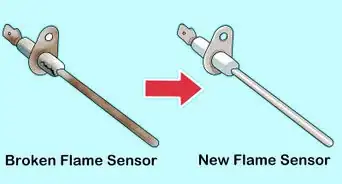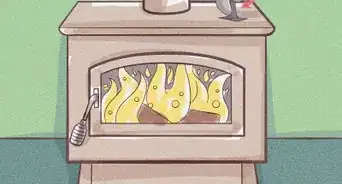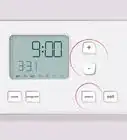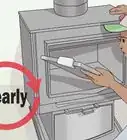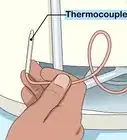This article was co-authored by wikiHow Staff. Our trained team of editors and researchers validate articles for accuracy and comprehensiveness. wikiHow's Content Management Team carefully monitors the work from our editorial staff to ensure that each article is backed by trusted research and meets our high quality standards.
There are 8 references cited in this article, which can be found at the bottom of the page.
This article has been viewed 34,531 times.
Learn more...
Propane heaters are fantastic devices for warming up an area in very little time. However, working with propane is dangerous and you should always follow the proper safety procedures when doing so. Never use your propane heater in a small space. To light the propane heater, all you need is a propane tank and matches or a lighter. Switching it off when you're finished is easy; just make sure you store it away properly to prevent damage.
Steps
Choosing a Heater and Being Safe
-
1Get a propane heater that's the right size for what you need it for. Generally, the bigger the propane heater, the more heat and carbon monoxide it'll make. Use the British Thermal Unit (BTU) measurement on the side of the propane heater to determine which size is best for you. BTUs measure energy. A single BTU is the same as the amount of energy needed to raise the temperature of 1 millilitre (0.034 fl oz) of water 1 °F (−17 °C).[1]
- Small propane heaters can create up to 5000 BTUs in the space of an hour. These heaters are perfect for camping and other outdoor activities.
- Large propane heaters emit between 10,000 and 45,000 BTUs in 1 hour. Larger heaters are better for heating large warehouses or building sites.
-
2Buy a propane heater with plenty of safety features. As mentioned above, propane heaters are dangerous if you don't use them properly. Most of these machines are built with safeguards. The most vital safety feature is an Oxygen Depletion System (ODS) alert. Heaters with this feature will sound an alarm when oxygen levels start to get low. Look for other safety features for your heater too, such as:
- Heat-resistant burners
- Rain- and wind-resistant shields
- Lightweight body for easy handling
- Manual shut-off options
Advertisement -
3Use the heater outdoors. Propane heaters are dangerous indoors because there's not enough oxygen available to dilute the carbon monoxide. Outside, propane heaters are very safe to use because of how much oxygen is available.
- You should only use the heater indoors in a large space with plenty of air and ventilation.
- Avoid using the propane heater in a small, enclosed space like a tent or a bedroom.
-
4Avoid falling asleep with the propane heater on. If you're in a well ventilated or spacious room and you're feeling cold, you might want to turn the propane heater on for a few minutes to warm the room. It's incredibly dangerous to do this. If you fall asleep, the propane heater will continue pumping carbon monoxide into the room while you consume the oxygen.
- If you're asleep and the heater is still on, you could end up unconscious. If you wake up and you've been breathing the carbon monoxide for some time, you'll be in a state of confusion.
Lighting the Propane Heater
-
1Set the propane heater up outdoors before you light it. As mentioned above, the heater is very dangerous if it's lit indoors. If you have a garage, open the door completely and place the heater near the entrance. Otherwise, place it outdoors on a non-combustible surface like asphalt or concrete.[2]
- If the propane heater is heavy, use a hand-truck, a trolley, or a wheelbarrow to move it.
-
2Check the regulator for damage or wear and tear. The regulator controls the flow of gas in the propane heater and lowers the pressure in the tank. The regulator is a circular device with a rubber cap sticking out of it, usually found at the bottom of the heater. If your regular is damaged, cracked, or badly worn, you'll need to replace it.[3]
- Buy a replacement regulator if you need to at the local heating store.
-
3Remove the valve cap and attach the heater to the tank. Find the valve cap at the top of your tank, sticking out at the top of it. Pull the cap off the valve. Hold the heater upright, insert the heater's regulator into the valve, and secure it by twisting the rubber fastener.[4]
- If you have difficulty removing the valve cap, put on a glove. The glove will allow you to use more force without damaging your hand.
-
4Open the valve and turn the regulator knob to the medium setting. You can open the valve by turning the handle. The valve is located on top of the valve cap. Keep turning it until you can't turn it any further. Locate the knob on the front of the regulator and twist it anti-clockwise, stopping where it's marked "medium."[5]
-
5Place a match or lighter in front of the mesh screen on the regulator. The regulator might have metal wiring in front of the mesh screen that you can't fit your hand through. If this is the case, use extra long matches or a lighter.[6]
- Don't touch the mesh screen with the flame, hold it about 1 inch (2.5 cm) away from it.
-
6Push in the button on the safety shut-off valve. Find the button at the end of the stem holding the mesh screen. Keep the match in front of the mesh screen and hold the button in until the burner lights. When it lights, hold the button for a further 30 seconds, releasing it slowly when you're finished.[7]
Shutting off the Propane Heater
-
1Move the regulator knob to the off position. You switched the regulator knob to the "medium" setting earlier. This time, turn the knob clockwise until it reaches the position marked "off."[8]
-
2Close the valve on the propane tank. Turn the valve the opposite direction to the way you turned it earlier. Keep turning the handle until it won't turn any further. This will cut the supply of propane to your heater.[9]
- After you shut the heater off, it will be very hot for 7 to 8 minutes.
-
3Give the heater 15 to 20 minutes to completely cool down. It's dangerous to work with the heater when it's at its very hottest. By giving it time to cool down, you reduce the chances of an accident.[10]
- After the 15 to 20 minutes have passed, test the heat by placing your hands around the head of the propane heater. Don't touch it, but put your hands near it to feel if there's any heat coming from it.
-
4Detach the heater and store it facing down. To remove the heater, twist the rubber fastener until you can pull the propane heater out of the tank's valve with ease. Storing the heater face down prevents water from pooling inside of it.[11]
-
5Place the valve cap back on the propane tank. Once everything else is put away, take the valve cap and slide it back on top of the valve. You might need to use significant pressure to push it into place.
Warnings
- If the heater isn't working, never try to repair it yourself. Bring it to a professional repair person or buy a new one.⧼thumbs_response⧽
- If water does lodge in the heater, don't use it. The components of the heater will have been damaged and it will be dangerous to use the heater.⧼thumbs_response⧽
- Never use the heater in an area where combustible elements are in the air.⧼thumbs_response⧽
Things You'll Need
- Propane tank
- Propane heater with an ODS alert
- Gloves
- Hand truck
- Lighter or matches
References
- ↑ https://www.bobvila.com/articles/choosing-a-patio-heater/
- ↑ https://www.bobvila.com/articles/choosing-a-patio-heater/
- ↑ https://youtu.be/QQf7xUhBLQ4?t=37s
- ↑ https://youtu.be/QQf7xUhBLQ4?t=44s
- ↑ https://youtu.be/QQf7xUhBLQ4?t=1m6s
- ↑ https://www.forconstructionpros.com/equipment/worksite/press-release/12047311/17-tips-for-using-propane-heaters-on-a-jobsite
- ↑ https://www.forconstructionpros.com/equipment/worksite/press-release/12047311/17-tips-for-using-propane-heaters-on-a-jobsite
- ↑ https://youtu.be/QQf7xUhBLQ4?t=1m35s
- ↑ https://youtu.be/QQf7xUhBLQ4?t=1m41s
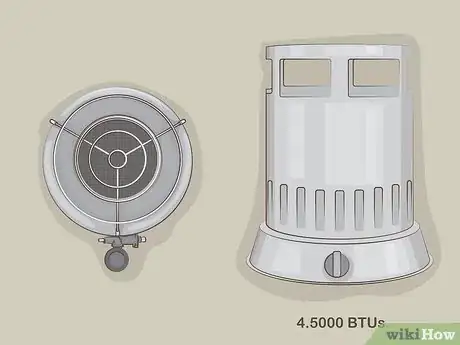
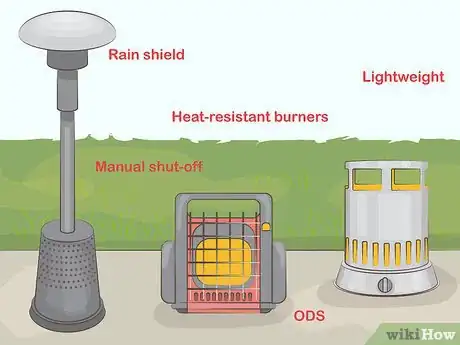


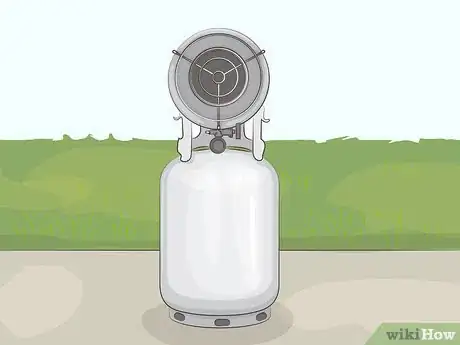

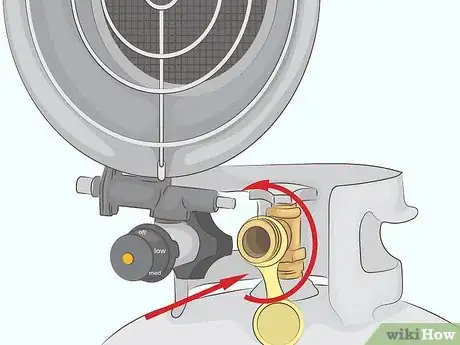

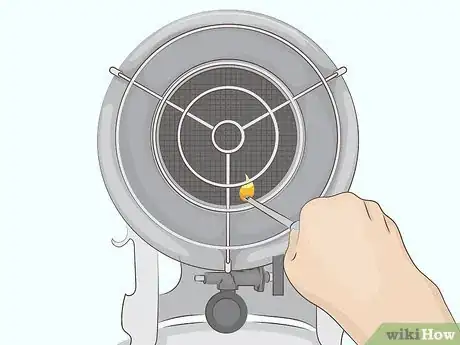

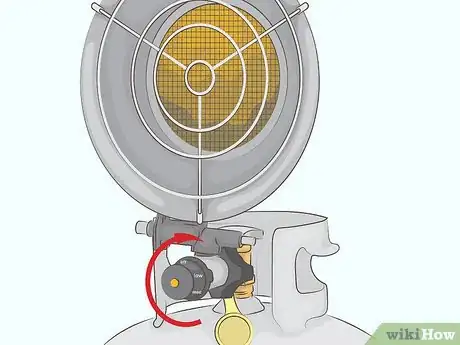


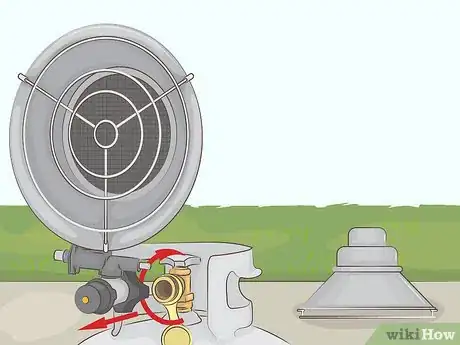
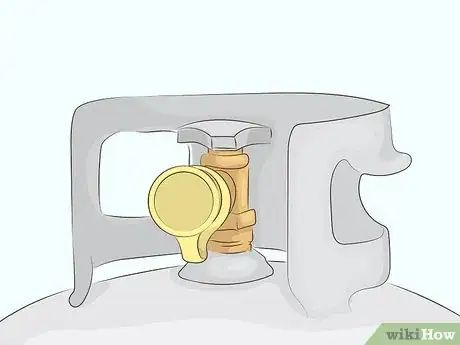
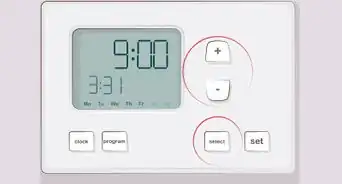
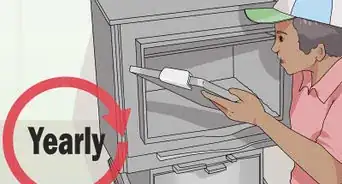
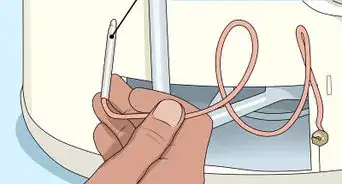
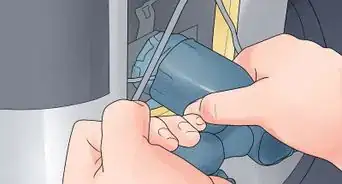

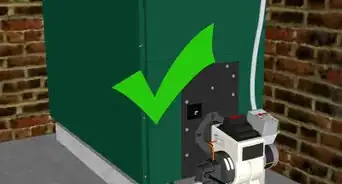

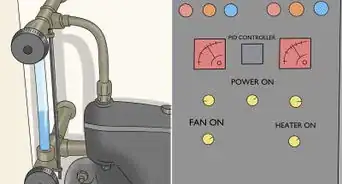

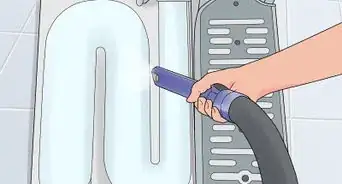
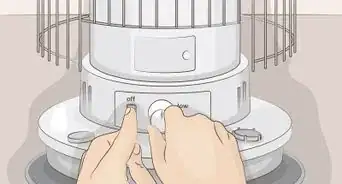
-Step-34.webp)
